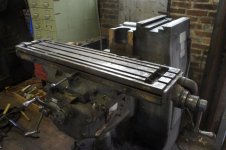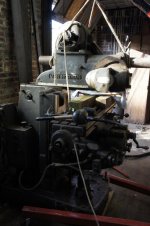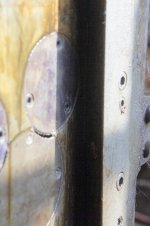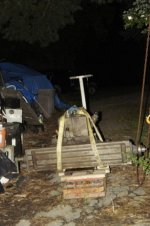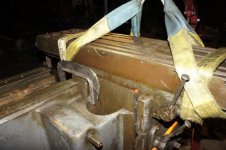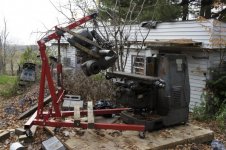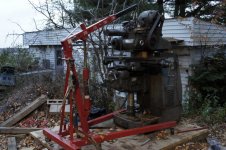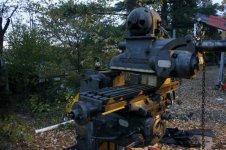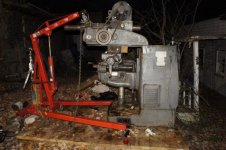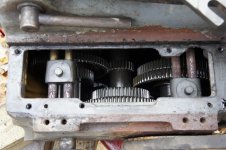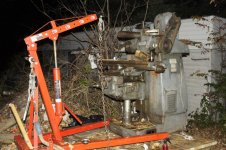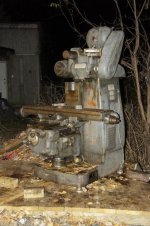Paolo_MD
Stainless
- Joined
- Apr 6, 2013
- Location
- Damascus, MD
I've just purchased two old Van Norman 22L milling machines (for the overall details of the move etc. follow this thread) and I need to remove the ram and the knee in order to move them.
My plan is to leave overarm, head and motor mounted on the ram, remove the rear stop pin, crank the ram forward till the pinion disengages the rack, push it forward till everything exit from the dovetail, while holding the ram assembly with an engine hoist.
From the pictures on the manual I cannot see clearly what type of gib is there (e.g. tapered, or flat with adjusting screws on the side) and I'm wondering if it would be better to remove it once the pinion disengages the rack.
Am I missing anything?
Once I've removed the head, the vertical path for the knee is clear and, after removing the Z-axis stops I should be able to lift it till the elevation screw disengages. At that point I should be able to lift it straight up till I clear the dovetails.
And, yet again another question regarding the gib: shall I leave it in place, or is it better to loose it? My concern with loosening or, even worse, removing it, would be that I'd lose the vertical alignment and risk to damage the feeds splined shaft and elevation screw.
Does it sound right?
I'm planning to start the disassembly tomorrow after work. Therefore, I'd appreciate any comment from any member who has taken apart his or her own one.
Thanks!
Paolo
My plan is to leave overarm, head and motor mounted on the ram, remove the rear stop pin, crank the ram forward till the pinion disengages the rack, push it forward till everything exit from the dovetail, while holding the ram assembly with an engine hoist.
From the pictures on the manual I cannot see clearly what type of gib is there (e.g. tapered, or flat with adjusting screws on the side) and I'm wondering if it would be better to remove it once the pinion disengages the rack.
Am I missing anything?
Once I've removed the head, the vertical path for the knee is clear and, after removing the Z-axis stops I should be able to lift it till the elevation screw disengages. At that point I should be able to lift it straight up till I clear the dovetails.
And, yet again another question regarding the gib: shall I leave it in place, or is it better to loose it? My concern with loosening or, even worse, removing it, would be that I'd lose the vertical alignment and risk to damage the feeds splined shaft and elevation screw.
Does it sound right?
I'm planning to start the disassembly tomorrow after work. Therefore, I'd appreciate any comment from any member who has taken apart his or her own one.
Thanks!
Paolo


